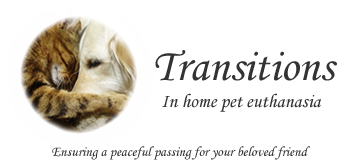“At the End of Life” is a collection of essays written by healthcare professionals, and family members about the decisions made for the dying. Reading this book recently I realized that there are many corollaries that can be drawn between the care we provide our patients, and the discussions we have with their owners, and the decisions faced by the families of the dying. Highlighted in all of the essays is the difficulty in finding a balance between what can and should be done.
As veterinarians we are in the unique position to offer euthanasia as a humane and reasonable option for our dying patients. However, as advances are made in the field of veterinary medicine, and life expectancy for our patients increases, we are faced with many of the same dilemmas as our counterparts in human medicine.
As a young, eager, and naïve intern in the trenches of the emergency room at the University of Pennsylvania I vividly remember my trepidation stepping in to my first euthanasia. I had never met the owners, I knew nothing about them, or their pet, and yet I was to become quickly involved in this difficult time intheir lives. What should I say? What happens if something doesn’t go to plan? How do I offer comfort and support? How do I respond if they ask me if they are doing the right thing? I turned to my supervisors and mentors for support, but ultimately I was alone with the owners in that small consulting room when the door closed.
I realized that all my lists of differential diagnoses, memorizing of tests to be run, and their interpretation; my shiny new stethoscope, and crisp white coat with the two letters “Dr” in front of my name were all woefully inadequate to prepare me for this moment. I don’t remember any courses at vet school addressing grief, communication with grieving clients, the process of euthanasia. I had stood in the corner of the room and observed euthanasia many times, had provided tissues, and comfort to the grieving, and yet when you are on your own these experiences provide little reassurance. As my role has changed from student to mentor over the last ten years it would seem that while advances in medicine have continued apace our training in these finer points of our daily practice remains rudimentary at best.
I feel privileged to provide a dignified end to suffering in my patients. Many, many times I have heard the statement, “this must be the worst part of the job.” In truth, to be able to provide this service to the exhausted and traumatized families of my dying patients, as well as to provide a dignified end for animals whose prognosis is grave is often easier than continuing to provide care in situations where you know the animal to be suffering and the outcome to be hopeless.
As a profession the line between what can and should be done becomes more poorly defined as advances are made–renal transplant and a life of medication administration with increased risk of opportunistic infections? Placement of a feeding tube in patients with an oral tumor? Administration of multiple pain medications to patients with severe osteoarthritis who can no longer get out of bed without assistance? Is our role to discuss the treatment options available, their likely outcomes, and their costs, or use our knowledge and skill to help our clients come to the right decision for their family, and their pet?
We all find where we feel the line in the sand should be drawn, and this position is likely different for all of us. As I think back over the hundreds of euthanasias I have performed and the many more conversations about euthanasia I have been part of, sometimes I wonder whether the right decision was made–Could we have done more? Should we have done more? I realize that even in the cases where I know the outcome may have been different if more funds were available, or if the owners were willing to provide more intensive care at home in all instances, the decision that was right at the time for that family was reached. I realize that I do not feel I have failed the patients who had treatable conditions, but happen to be in a family that cannot provide adequate care to sufficiently alleviate suffering for whatever reason. It is the patients I have seen die slow, sometimes agonizing deaths with progressively more aggressive interventions, where the prognosis is dire, and the owners not able to say goodbye that still haunt me.
–Suzy Fincham-Gray, BvetMed, BSc, DACVIM

